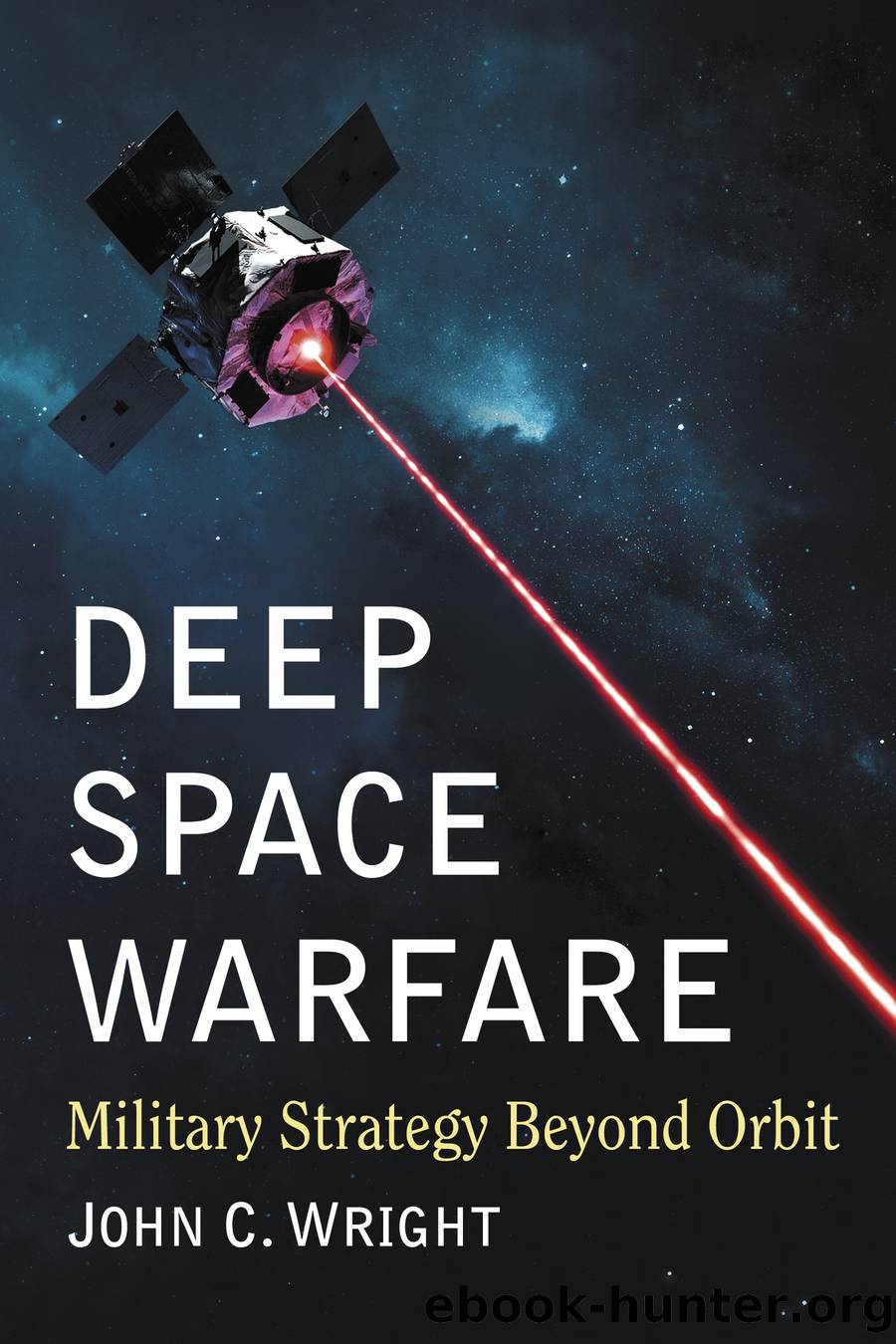Deep Space Warfare by John C. Wright

Author:John C. Wright
Language: eng
Format: epub
Publisher: McFarland & Company, Inc., Publishers
Published: 2020-01-08T00:00:00+00:00
Figure 7: One USAF targeting concept (Air Force Pamphlet 14â210, USAF Intelligence Guide, 1 February 98).
Finally, before targeting is finalized, targets must be selected based on their legal status. While we are not sure if space warfare will change these distinctions, examining what we use now can be helpful in thinking about the legality of space targets.
THE LAW OF ARMED CONFLICT
In war, targeting is physically limited only by the will of the attacker and his ability to successfully carry out an attack. Despite this, given humanityâs horrific experiences with war in the past, we have achieved a remarkable accomplishment in promulgating the Geneva Conventions of 1949 and their subsequent additions.27 These conventions form the basis of a branch of international law known as the Law of Armed Conflict (LOAC). These agreements, to which states have ostensibly agreed to bind themselves, clearly stipulate what is a valid military target and what is not. They do this not by crafting a long laundry list of items stating what qualifies as military targets and which as civilian, but by establishing broad guidance on how military forces are supposed to conduct themselves. By extension, these agreements also direct how civilians and noncombatants are supposed to conduct themselves as well. This has major implications for those caught up in wartime conditions; a civilian who in his rage picks up a weapon in the middle of a fight, or who allows one side or another to use his home as a supply depot, has forfeited his protected status. This will likely not change in the space domain.
Legally, LOAC is valid and applicable to interstellar and interplanetary conflicts. The conventions do not set geographical limits, and are clear in their application to all parties of a conflict (state and non-state actors). This means that any fighting which goes on outside the atmosphere is technically subject to these conventions, regardless of how distant the fighting is.
Naturally there are problems with this assumption. While LOAC could one day be the foundation to a larger and more robust agreement on conducting warfare in space, it must first be obeyed by its signatories. Since its promulgation, LOAC has been challenged in nearly every war; the more brutal, the more it has been ignored. Since the end of the Cold War and the subsequent rise of ethnic and religious violence, and ethnic-based independence movements across the globe, groups and tribes fighting for their very existence have found it difficult to comply with LOAC. This is especially true if their rivals are long-hated competitors seen as inhuman opponents.
Applying what we know happens on Earth to a potential conflict between humanity and a non-human competitor produces a bleak outlook. If complying with voluntary restrictions on combat is a problem for human groups, how much more difficult will it be between completely different species who may not even value the otherâs existence? How could one side expect to trust the other? To hard-liners, it would be like making a treaty with an insect or other
Download
This site does not store any files on its server. We only index and link to content provided by other sites. Please contact the content providers to delete copyright contents if any and email us, we'll remove relevant links or contents immediately.
Tools of Titans by Timothy Ferriss(7813)
Turbulence by E. J. Noyes(7700)
Astrophysics for People in a Hurry by Neil DeGrasse Tyson(5000)
Secrets of Antigravity Propulsion: Tesla, UFOs, and Classified Aerospace Technology by Ph.D. Paul A. Laviolette(4992)
Design of Trajectory Optimization Approach for Space Maneuver Vehicle Skip Entry Problems by Runqi Chai & Al Savvaris & Antonios Tsourdos & Senchun Chai(4840)
Room 212 by Kate Stewart(4734)
Pale Blue Dot by Carl Sagan(4613)
The David Icke Guide to the Global Conspiracy (and how to end it) by David Icke(4379)
A Journey Through Divination and Astronomy by Publishing Pottermore(4249)
Apollo 8 by Jeffrey Kluger(3512)
Goodbye Paradise(3446)
Losing the Nobel Prize by Brian Keating(3425)
COSMOS by Carl Sagan(3346)
The Five People You Meet in Heaven by Mitch Albom(3334)
How to Read Water: Clues and Patterns from Puddles to the Sea (Natural Navigation) by Tristan Gooley(3239)
Brief Answers to the Big Questions by Stephen Hawking(3239)
How to Read Nature by Tristan Gooley(3077)
The Order of Time by Carlo Rovelli(3073)
A Brief History of Time by Stephen Hawking(2819)
